“Our mind is full of rubbish” —Venerable Chodron. It’s time to purify: sutra practice of “The Bodhisattva’s Confession of Moral Downfalls” with commentary
The 35 Confessional Buddhas practice is the ultimate sutra-based purification practice. Ven. Thubten Chodron explains:
“Why do we need to purify? Because our mind is full of rubbish.”
Even though The Bodhisattva’s Confession of Moral Downfalls to the Thirty-Five Buddhas — to use the full title in English — is often one of the first practices taught to a Buddhist student, it remains important for all stages of practice. Without a settled mind — free of stresses, afflictions and tumultuous thoughts — it is difficult to make progress in our meditations. Ven. Chodron, during a teaching on the practice, said:
“Have you noticed that your mind is full of all sorts of illogical thoughts, disturbing emotions, and obsessions? These afflictions are not the nature of the mind. They are like clouds covering the clear sky. They are temporary and can be removed. It is to our advantage to remove them. Why? We want to be happy and peaceful and to be free from suffering, and we want others to be so as well.”

Lama Tsongkhapa prostrated 3.5 million times
Even the most senior of Lamas still practice the Thirty-Five Buddhas regularly. The great Lama Tsongkhapa practised and taught 35 Confessional Buddhas all of his life, and famously performed 3.5 million prostrations — 100,000 to each of the 35 Buddhas — so many, that his body left an imprint on the retreat cave floor.
Every person, senior and beginner alike, needs to tame their mind, beginning with the conscious act of “dumping” the baggage from the past. Many psychologists and psychiatrists embrace this form of practice — the conscious act of “Four Opponent Powers”:
- Regretting
- Reliance or Repair
- Remedial Action
- Promise

Bhikshuni Thubten Chodron describes the Four Opponent Powers this way:
- “The power of regret for having done the destructive action.
- The power of reliance: taking refuge, which restores our relationship with holy objects, and generating the altruistic intention, which restores our relationship with other sentient beings.
- The power of the remedial action, e.g. prostration, offering, reciting the names of the Buddha, reading or contemplating the Dharma, etc.
- The power of the promise not to repeat the action.”
The “Four Opponent Powers” — either in the form of 35 Confessional Buddhas, or Vajrasattva practice — is considered by many teachers to be the most effective for purifying past negative karma. Karma is nothing more than “cause and effect.”

Karma — Cause and Effect
Karma is a universal truth, not only in spiritual practice but in the physical world (i.e. Newton’s Law). Some people try to dismiss Karma as symbolic or even imaginary. Even if it is imaginary, it leaves an indelible footprint in our lives. For example, unless we have no conscience (i.e., a sociopath), the guilt we feel over a negative action, such as killing an animal (even by accident), creates many stress-factors that influences everything in our lives. Thoughts of the animal’s suffering arise, causing guilt to imprint. We can’t get the image out of our head. We see the animal breathing it’s last gasp, eyes pleading in pain.

When we try to meditate weeks after this negative imprint, those afflictive thoughts arise. We can’t unwrite that from the hard drive of our brains — not without special security software (in this metaphor, the software being 35 Buddhas.) As Buddha taught — and many mental health professionals would concur — these guilt feelings imprint on our conscious and subconscious long after the event. In psychiatry, the Doctor might try to pull out the feelings of guilt and have us confront them. In the Catholic faith, we might do “confession” to a priest, with much the same effect. In Mahayana, we practice purifications, always involving the “Four Opponent Powers.” Whether this is just us confronting our own thoughts, or confessing it to a Buddha, it amounts to the same thing. It is the actions of Body, Speech and Mind, carefully formulated in this Sutra practice of the 35 Confessional Buddhas, that helps us release our guilt and other obscurations.
On the other hand, if we ignore it, bury it, try to forget, the seeds of that negative Karma arise unexpectedly years later. In Buddhism, we are taught that karma that is not purified multiplies. This, too, is sound psychology. The guilt we try to bury tends to become a behavioural or stress issue in the future if we don’t confront the pain and make peace with it.

Sutra practice
As a Sutra-based practice, no empowerment or permission is required, although receiving teachings is beneficial. The practice involves all of Body (actions), Speech, and Mind. For example, we prostrate physically (action of body) to oppose our vanity and pride (and other afflictions), chant Namo praises of the 35 Buddhas to help us “Repair” our enthusiasm for Dharma, and we visualize the 35 Buddhas as stunningly beautiful and divine beings to provide the example that fuels our “Determination.” We also make a promise — not to do it again — which constitutes our “Remedial Action.”
The Bodhipattidesanavrtti, translated as The Bodhisattva’s Confession of Ethical Downfalls, is a powerful practice found in the Ratnakutasutra — The Stack of Jewels Sutra (sometimes translated as Jewel Heap Sutra). The Maharatnakuta Sutra, as it’s also titled, is a collection of 49 Sutra texts, including the Triskandhadharmasutra (Three Heaps Sutra), wherein the 35 Buddha’s practice is found. Originally, Shakyamuni Buddha taught the practice to help 35 of his students who felt remorse over the death of a brewer’s son.

Often the first practice a student undertakes
It is often the first practice given to a serious student. Through this practice — and especially the conscious practice of the Four Opponent Powers — the student’s mindstream is purified. Then, no matter how advanced we grow in our practice, the 35 Confession Buddhas’ practice is likely to remain a regular meditation throughout our lives. Why? Because, as long as we are humans, we create negative karma and obstacles each and every day.
Benefits of practice
The benefits of 35 Confessional Buddhas are extensive. According to Lama Zopa Rinpoche: “No matter what vows you might have broken (tantric root vows, or pratimoksha vows, or bodhisattva vows, or Samaya vows) no matter what negative karma you have created, everything can be purified. Out of his incomparable kindness, Guru Shakyamuni Buddha revealed different purification methods, such as prostrations to the 35 Buddhas, who are all manifestations of Guru Shakyamuni Buddha, and recitation of their names. Recitation of each Buddha’s holy name purifies tens of thousands of aeons of negative karma. If for some reason you cannot do prostrations, it is still good to at least recite holy names of the 35 Buddhas every day. No matter how heavy the negative karma you have accumulated, the Buddha has revealed a method to purify it.” [2]
This is the reason that even senior Lamas continue the practice. If we consider the labours of Milarepa to burn off his negative karma — endlessly hauling rocks to build houses for Marpa — allocating 20 minutes a day for this practice seems pretty fortunate, considering we develop similar merit. Of course, Milarepa was burning off the karma of multiple homicides.
Lama Zopa Rinpoche — who often suggests this practice to students — uses strong language to emphasize how overwhelming important the practice is:
“If you recite Guru Shakyamuni Buddha’s name just once, you purify 80,000 aeons of negative karma. Reciting the name of any of the 35 Buddhas purifies many thousands of aeons of negative karma. Even if you were to lose that much wealth, it would be nothing compared to losing the chance of practising the 35 Buddhas. This is such an easy way to purify and to collect extensive merit. Simply by reciting the names of the 35 Buddhas, you can achieve unbelievable purification.” [2]
35 Confessional Buddha’s works in a similar fashion to Catholic confession. We confess our “sin”, the priest gives us a task to help us “purify” our souls, and at the end, he blesses us and tells us to sin no more — thus, we are restored to Grace. All four opponent powers are there in Catholic confession: Confession (Regret), assigning a task, such as a certain number of Hail Marys (Repair), asking “Are you sorry for your sin? and do you promise to refrain?” (Resolution), and “Go and sin no more” (Remedial action.) Psychiatry employs a more elaborate version of this process.
Of course, Buddhism predates both, with the Four Opponent Powers practice of 35 Confessional Buddhas. The key difference is that the Buddhist method is “self-help.” No outside party is forgiving us. The other key differences are conceptual. Instead of a soul, Buddhists have “mindstream”; instead of sin, Buddhists have “afflictive obstacles”; instead of forgiveness from an outside agent, Buddhists pro-actively resolve to undertake logical remedial action.
Choosing a Language
Many people prefer to chant and contemplate the sacred Sanskrit. Others prefer the deep resonant chanting of Tibetan. Still, others, prefer English chanting. However, for some people, the English translation sounds too descriptive and loses some of its profundity — the sound of sacred chanting. All are correct, all have merit, and it’s a matter of preference. [See the video below to see the difference when chanted in English.
Here is the 35 Confessional Buddhas practice video with subtitles (with Tibetan and English both):
Here are names of the Buddhas in all three languages, including written Tibetan [3]:
| Sanskrit | Tibetan | Tibetan pronunciation | English |
| Śākyamuni | ཤཱཀྱ་ཐུབ་པ་ | shakya tup-pa | Shakyamuni |
| Vajrapramardī | རྡོ་རྗེ་སྙིང་པོས་རབ་ཏུ་འཇོམས་པ | dorjé nyingpö raptu jompa | Thoroughly Conquered with Vajra Essence |
| Ratnārśiṣ | རིན་ཆེན་འོད་འཕྲོ | rinchen ö-tro | Radiant Jewel |
| Nāgeśvararāja | ཀླུ་དབང་གི་རྒྱལ་པོ | luwang gi gyelpo | King, Lord of the Nagas |
| Vīrasena | དཔའ་བོའི་སྡེ | pawö-dé | Army of Heroes |
| Vīranandī | དཔའ་བོ་དགྱེས | pawö-gyé | Delighted Hero |
| Ratnāgni | རིན་ཆེན་མེ | rinchen-mé | Jewel Fire |
| Ratnacandraprabha | རིན་ཆེན་ཟླ་འོད | rinchen da-ö | Jewel Moonlight |
| Amoghadarśi | མཐོང་བ་དོན་ཡོད | tongwa dönyö | Meaningful Vision |
| Ratnacandra | རིན་ཆེན་ཟླ་བ | rinchen dawa | Jewel Moon |
| Vimala | དྲི་མ་མེད་པ | drima mépa | Stainless One |
| Śūradatta | དཔའ་སྦྱིན | pa-jin | Glorious Giving |
| Brahma | ཚངས་པ | tsangpa | Pure One |
| Brahmadatta | ཚངས་པས་སྦྱིན་ | tsangpé jin | Giving of Purity |
| Varuṇa | ཆུ་ལྷ | chu lha | Water God |
| Varuṇadeva | ཆུ་ལྷའི་ལྷ | chu lhaé lha | Deity of the Water Gods |
| Bhadraśrī | དཔལ་བཟང | pel-zang | Glorious Goodness |
| Candanaśrī | ཙན་དན་དཔལ | tsenden pel | Glorious Sandalwood |
| Anantaujas | གཟི་བརྗིད་མཐའ་ཡས | ziji tayé | Infinite Splendour |
| Prabhāśrī | འོད་དཔལ | ö pel | Glorious Light |
| Aśokaśrī | མྱ་ངན་མེད་པའི་དཔལ་ | nyangen mépé pel | Sorrowless Glory |
| Nārāyaṇa | སྲེད་མེད་ཀྱི་བུ | sémé-kyi bu | Son of Non-craving |
| Kusumaśrī | མེ་ཏོག་དཔལ | métok pel | Glorious Flower |
| Tathāgata Brahmajyotivikrīḍitābhijña | དེ་བཞིན་གཤེགས་པ་ཚངས་པའི་འོད་ཟེར་རྣམ་པར་རོལ་པ་མངོན་པར་མཁྱེན་པ | dézhin shekpa tsangpé özer nampar rölpa ngönpar khyenpa | Pure Light Rays Clearly Knowing by Play |
| Tathāgata Padmajyotirvikrīditābhijña | དེ་བཞིན་གཤེགས་པ་པདྨའི་འོད་ཟེར་རྣམ་པར་རོལ་པས་མངོན་པར་མཁྱེན་པ | dézhin shekpa pémé özer nampar rölpé ngönpar khyenpa | Lotus light Rays Clearly knowing by Play |
| Dhanaśrī | ནོར་དཔལ | norpel | Glorious Wealth |
| Smṛtiśrī | དྲན་པའི་དཔལ | drenpé pel | Glorious Mindfulness |
| Suparikīrtitanāmagheyaśrī | མཚན་དཔལ་ཤིན་ཏུ་ཡོངས་སུ་གྲགས་པ | tsenpel shintu yongsu drakpa | Renowned Glorious Name |
| Indraketudhvajarāja | དབང་པོའི་ཏོག་གི་རྒྱལ་མཚན་གྱི་རྒྱལ་པོ | wangpö tok-gi gyeltsen-gyi gyelpo | King of the Victory Banner that Crowns the Sovereign |
| Suvikrāntaśrī | ཤིན་ཏུ་རྣམ་པར་གནོན་པའི་དཔལ | shintu nampar nönpé pel | Glorious One Who Fully Subdues |
| Yuddhajaya | གཡུལ་ལས་རྣམ་པར་རྒྱལ་བ | yül lé nampar gyelwa | Utterly Victorious in Battle |
| Vikrāntagāmī | རྣམ་པར་གནོན་པའི་གཤེགས་པའི་དཔལ | nampar nönpé shekpé pel | Glorious Transcendence Through Subduing |
| Samantāvabhāsavyūhaśrī | ཀུན་ནས་སྣང་བ་བཀོད་པའི་དཔལ | kün-né nangwa köpé pel | Glorious Manifestations Illuminating All |
| Ratnapadmavikramī | རིན་ཆེན་པདྨའི་རྣམ་པར་གནོན་པ | Rinchen padmé nampar nönpa | Jewel Lotus who Subdues All |
| Ratnapadmasupraṭiṣṭhita-śailendrarāja | དེ་བཞིན་གཤེགས་པ་དགྲ་བཅོམ་པ་ཡང་དག་པར་རྫོགས་པའི་སངས་རྒྱས་རིན་པོ་ཆེ་དང་པདྨ་ལ་རབ་ཏུ་བཞུགས་པའི་རི་དབང་གི་རྒྱལ་པོ | Dézhin shekpa drachompa yangdakpar dzokpé sanggyé rinpoché dang padama la raptu zhukpé riwang gi gyelpo | All-subduing Jewel Lotus, Arhat, Perfectly Completed Buddha, King of the Lord of the Mountains Firmly Seated on Jewel and Lotus |

Teaching and Commentary
It is always beneficial to attend teachings and have an opportunity to develop real insight into the practice. In the event you are unable to find a local teaching, there are a number of YouTube videos from various Venerable teachers. Below, for example, is part 1 of a 5 part teaching from Khenpo Sodargy Rinpoche. If you find part one of value, you should see the remaining 4 videos linked up in the play cue on YouTube (or just search for them.)
How to Practice
There are benefits simply from pure recitation only (speech only) and added benefits if combined with prostrations (body), and extraordinary benefits if combined with visualization. Even if you are doing recitation only (for example, while you are walking, or silently on an aeroplane), you should still be mindful of the Four Opponent Powers. You must think of the things you have done that you regret, and then meditate on each of the Powers. If you are doing the full recitation, it will include the words of regret, reliance, resolution and remedy.
If you are able to do a full practice, include the visualizations and physical prostrations if possible. For visualization, you imagine the entire merit field of the 35 Buddhas are in front of you [Refer to the thangkas in this feature.] It is important to also try to visualize that white purifying light is coming from the hearts of all the Buddhas and entering your body through the crown of your head, purifying you of all negative Karmas. Imagine your body suffused in white, purifying light.

You can also practice the praises only (Namo and the Buddha name.). But to really be considered a Buddhist practice you begin with “Taking Refuge and Bodhichitta” and end with a “Dedication.”
Taking Refuge is what really makes the practice a Buddhist practice. It is in refuge we find “Repair” and “Resolution.” It is our Refuge that protects us from the effects of negative Karma.
The Dedication, at the end, is critical to any Buddhist practice. You dedicate the merit of your practice to the benefit of all sentient beings. This is the act of a Bodhisattva, and critical to the “Remedial action” aspect of “the Four Opponent Powers.”
Here is a video with the full 35 Buddha’s Confession Prayer including captioning of the Sanskrit. The chanting is a little fast, but with practice, after a few tries, it should become natural:
Memorized versus recited
Until you have this memorized, recitation is equally beneficial. Once memorized, however, you can focus on your visualization and prostrations. You can, of course, recite the Sanskrit names, Tibetan names or English names. Most teachers agree they are all as valid. For many practitioners, though, the sacred sound and rhythm and tonality of Sanskrit makes it worth the effort to memorize the Sanskrit.
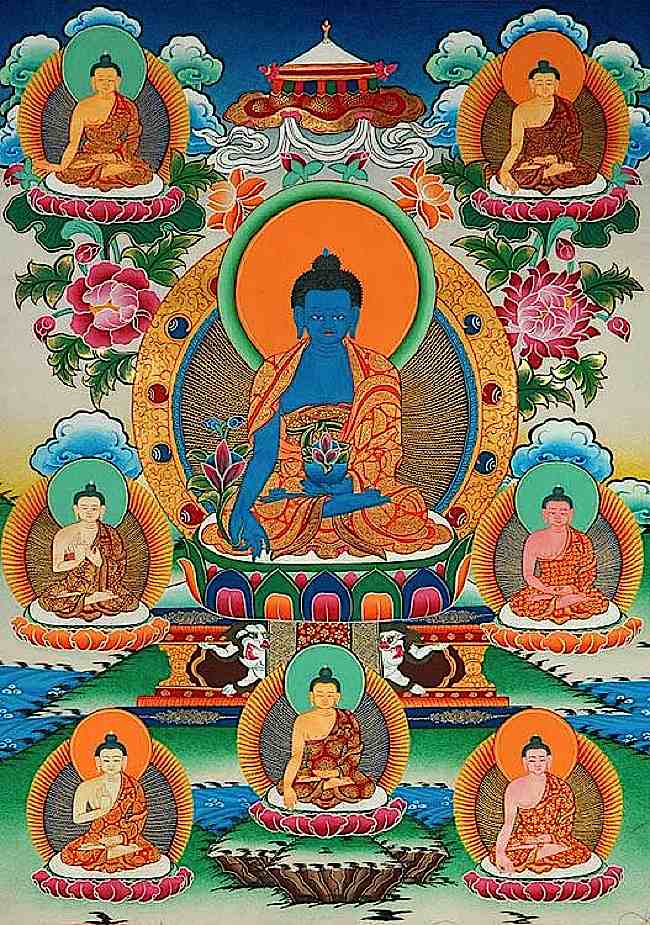
Medicine Buddhas
There is great merit in including praise to the seven Medicine Buddhas as well. This is extremely beneficial to practitioners. Below, the Medicine Buddha names are added (which makes for a total of forty-two.
English Version
Here, then, is Mahayana Sutra of The Three Superior Heaps: Bodhisattva’s Confession of Moral Downfalls:
I, whose name is [YOUR NAME HERE], at all times go for refuge to the Guru, go for refuge to the Buddha, go for refuge to the Dharma, go for refuge to the Sangha.
To the Teacher, Blessed One, Tathágata, Foe Destroyer, Completely Perfect Buddha, Glorious Conqueror Shakyamuni I prostrate.
To the Tathágata Complete Subduer with the Essence of Vajra I prostrate.
To the Tathágata Jewel of Radiant Light I prostrate.
To the Tathágata Powerful King of the Nagas I prostrate.
To the Tathágata Leader of the Heroes I prostrate.
To the Tathágata Glorious Pleasure I prostrate.
To the Tathágata Jewel Fire I prostrate.
To the Tathágata Jewel Moonlight I prostrate.
To the Tathágata Meaningful to Behold I prostrate.
To the Tathágata Jewel Moon I prostrate.
To the Tathágata Stainless One I prostrate.
To the Tathágata Bestower of Glory I prostrate.
To the Tathágata Pure One I prostrate.
To the Tathágata Transforming with Purity I prostrate.
To the Tathágata Water Deity I prostrate.
To the Tathágata God of Water Deities I prostrate.
To the Tathágata Glorious Excellence I prostrate.
To the Tathágata Glorious Sandalwood I prostrate.
To the Tathágata Endless Splendor I prostrate.
To the Tathágata Glorious Light I prostrate.
To the Tathágata Glorious One without Sorrow I prostrate.
To the Tathágata Son without Craving I prostrate.
To the Tathágata Glorious Flower I prostrate.
To the Tathágata Clearly Knowing through Enjoying Pure Radiance I prostrate.
To the Tathágata Clearly Knowing through Enjoying Lotus Radiance I prostrate.
To the Tathágata Glorious Wealth I prostrate.
To the Tathágata Glorious Mindfulness I prostrate.
To the Tathágata Glorious Name of Great Renown I prostrate.
To the Tathágata King of the Victory Banner Head of the Powerful Ones I prostrate.
To the Tathágata Glorious One Complete Subduer I prostrate.
To the Tathágata Great Victor in Battle I prostrate.
To the Tathágata Glorious One Complete Subduer Passed Beyond I prostrate.
To the Tathágata Glorious Array Illuminating All I prostrate.
To the Tathágata Jewel Lotus Great Subduer I prostrate.
To the Tathágata Foe Destroyer, Completely Perfect Buddha, King of Mount Neru Seated Firmly on a Jewel and a Lotus I prostrate.
O All you [Tathágatas] and all the others, however many Tathágatas, the Foe Destroyers, the Completely Perfect Buddhas, the Blessed Ones there are dwelling and abiding in all the worldly realms of the ten directions, all you Buddhas, the Blessed Ones, please listen to me.
Prostrations to the Seven Medicine Buddhas
To Bhagavan, Tathagata, arhat, Completely Perfect Buddha, Renowned Glorious King of Excellent Signs, I prostrate.
To Bhagavan, Tathagata, arhat, Completely Perfect Buddha, King of Melodious Sound, Brilliant Radiance of Skill, Adorned with Jewels, Moon, and Lotus, I prostrate.
To Bhagavan, Tathagata, arhat, Completely Perfect Buddha, Stainless Excellent Gold, Illuminating Jewel Who Accomplishes All Conduct, I prostrate.
To Bhagavan, Tathagata, arhat, Completely Perfect Buddha, Glorious Supreme One Free from Sorrow, I prostrate.
To Bhagavan, Tathagata, arhat, Completely Perfect Buddha, Melodious Ocean of Proclaimed Dharma, I prostrate.
To Bhagavan, Tathagata, arhat, Completely Perfect Buddha, Clearly Knowing by the Play of Supreme Wisdom of an Ocean of Dharma, I prostrate.
To Bhagavan, Tathagata, arhat, Completely Perfect Buddha, Medicine Guru, King of Lapis Lazuli Light, I prostrate.
In this life and in all my lives since beginning-less time, in all my places of rebirth, while wandering in samsára, I have done negative actions, have ordered them to be done, and have rejoiced in their being done. I have stolen the property of the bases of offering, the property of the Sangha, and the property of the Sanghas of the ten directions, have ordered it to be stolen, and have rejoiced in it being stolen. I have committed the five unbounded heinous actions, have ordered them to be committed, and have rejoiced in their being committed. I have completely engaged in the paths of the ten non-virtuous actions, have ordered others to engage in them, and have rejoiced in their engaging in them.
Being obstructed by such karmic obstructions, I shall become a hell being, or I shall be born as an animal, or I shall go to the land of the hungry ghosts, or I shall be born as a barbarian in an irreligious country, or I shall be born as a long-life god, or I shall come to have incomplete senses, or I shall come to hold wrong views, or I shall have no opportunity to please a Buddha.
All such karmic obstructions I declare in the presence of the Buddhas, the Blessed Ones, who have become exalted wisdom, who have become eyes, who have become witnesses, who have become valid, who see with their wisdom. I confess without concealing or hiding anything, and from now on I will avoid and refrain from such actions.
All you Buddhas, the Blessed Ones, please listen to me. In this life and in all my previous lives since the beginning-less time, in all my places of rebirth while wandering in samsára, whatever root of virtue there is in my giving to others, even in my giving a morsel of food to one born as an animal; whatever root of virtue there is in my maintaining moral discipline; whatever root of virtue there is in my actions conducive to great liberation; whatever root of virtue there is in my acting to fully ripen sentient beings; whatever root of virtue there is in my generating a supreme mind of enlightenment; and whatever root of virtue there is in my unsurpassed exalted wisdom; all of these assembled, gathered, and collected together, by fully dedicating them to the unsurpassed, to that of which there is no higher, to that which is even higher than the high, and to that which surpasses the unsurpassed, I fully dedicate to the unsurpassed, perfect, complete enlightenment.
Just as the Buddhas, the Blessed Ones of the past, have dedicated fully, just as the Buddhas, the Blessed Ones who are yet to come, will dedicate fully, and just as the Buddhas, the Blessed Ones who are living now, dedicate fully, so too do I dedicate fully.
I confess individually all negative actions. I rejoice in all merit. I beseech and request all the Buddhas. May I attain the holy, supreme, unsurpassed, exalted wisdom.
Whoever are the Conquerors, the supreme beings living now, those of the past, and likewise those who are yet to come, with a boundless ocean of praise for all your good qualities, and with my palms pressed together I go close to you for refuge.
NOTES
[1] Transcribed from teaching by Ven. Thubten Chodron at Dharma Friendship
[2] Making Life Meaningful, by Ven. Lama Zopa Rinpoche
[3] From Wikipedia https://en.wikipedia.org/wiki/Thirty-five_Confession_Buddhas
SaveSave
2 thoughts on ““Our mind is full of rubbish” —Venerable Chodron. It’s time to purify: sutra practice of “The Bodhisattva’s Confession of Moral Downfalls” with commentary”
Leave a Comment
More articles by this author
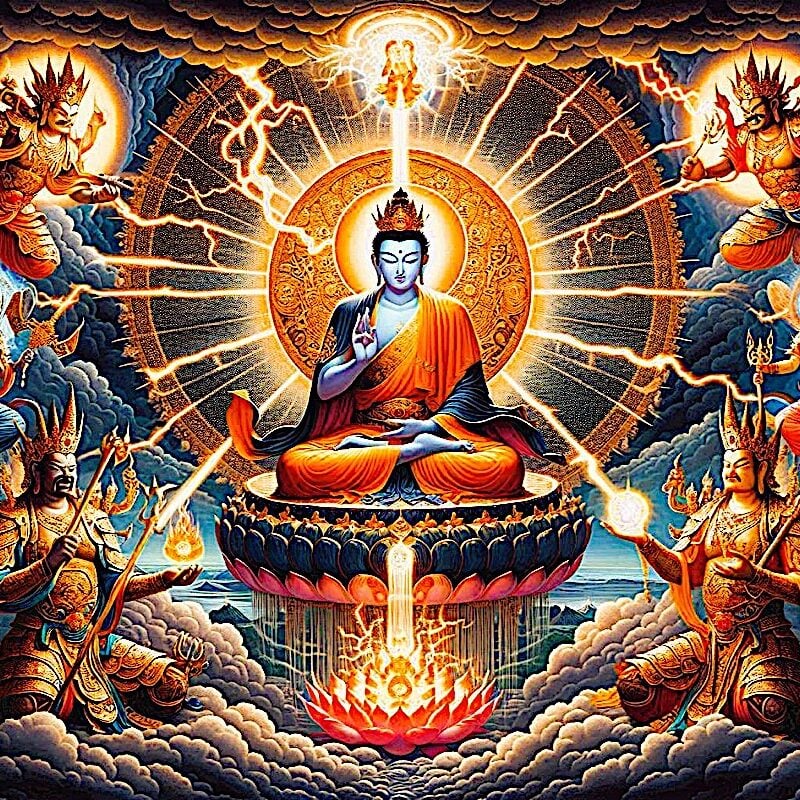
Protection from all Harm, Natural Disaster, Weather, Spirits, Evil, Ghosts, Demons, Obstacles: Golden Light Sutra: Chapter 14

Guru Rinpoche is ready to answer and grant wishes: “Repeat this prayer continuously” for the granting of wishes
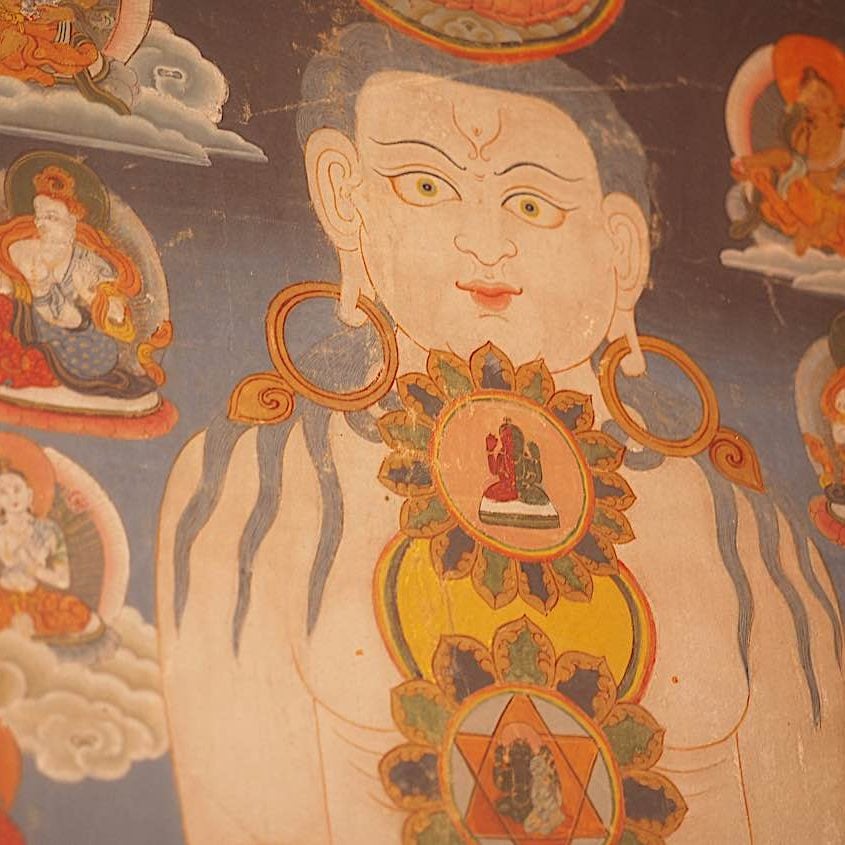
Buddhist body mandala practice in Vajrayana Buddhism — and riding the winds of the inner body “The prana goes where the mind goes.””
Search
Latest Features
Please support the "Spread the Dharma" mission as one of our heroic Dharma Supporting Members, or with a one-time donation.
Please Help Support the “Spread the Dharma” Mission!

Be a part of the noble mission as a supporting member or a patron, or a volunteer contributor of content.
The power of Dharma to help sentient beings, in part, lies in ensuring access to Buddha’s precious Dharma — the mission of Buddha Weekly. We can’t do it without you!
A non-profit association since 2007, Buddha Weekly published many feature articles, videos, and, podcasts. Please consider supporting the mission to preserve and “Spread the Dharma." Your support as either a patron or a supporting member helps defray the high costs of producing quality Dharma content. Thank you! Learn more here, or become one of our super karma heroes on Patreon.
Lee Kane
Author | Buddha Weekly
Lee Kane is the editor of Buddha Weekly, since 2007. His main focuses as a writer are mindfulness techniques, meditation, Dharma and Sutra commentaries, Buddhist practices, international perspectives and traditions, Vajrayana, Mahayana, Zen. He also covers various events.
Lee also contributes as a writer to various other online magazines and blogs.









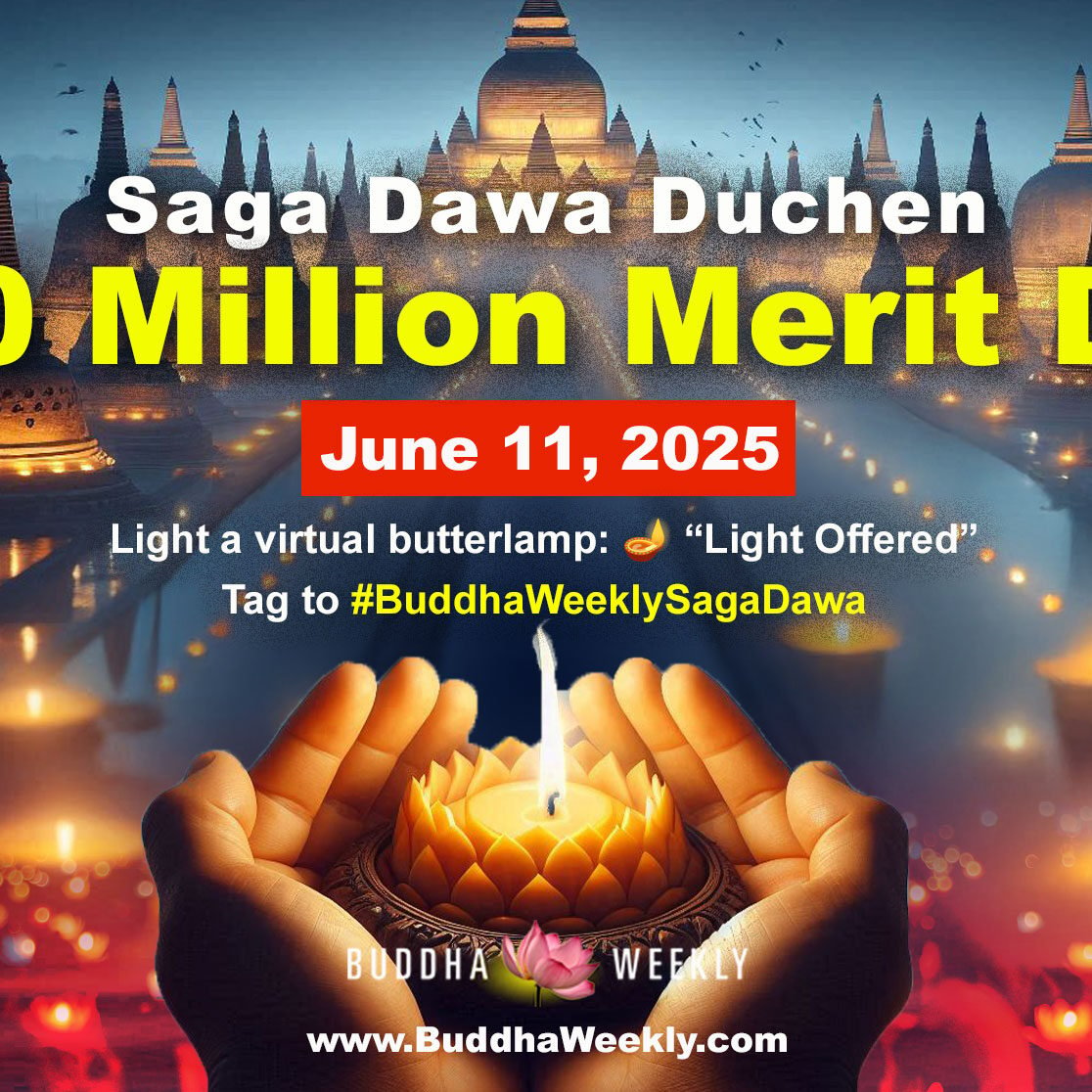

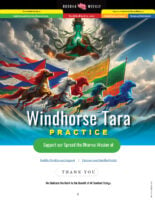




I have heard of the Confessional Buddhas before, but I never realized how profound a practice it is. Yet it is pretty simple and easier to grasp than Vajrasattva for purification. Thank you so much for this article.
Our pleasure!